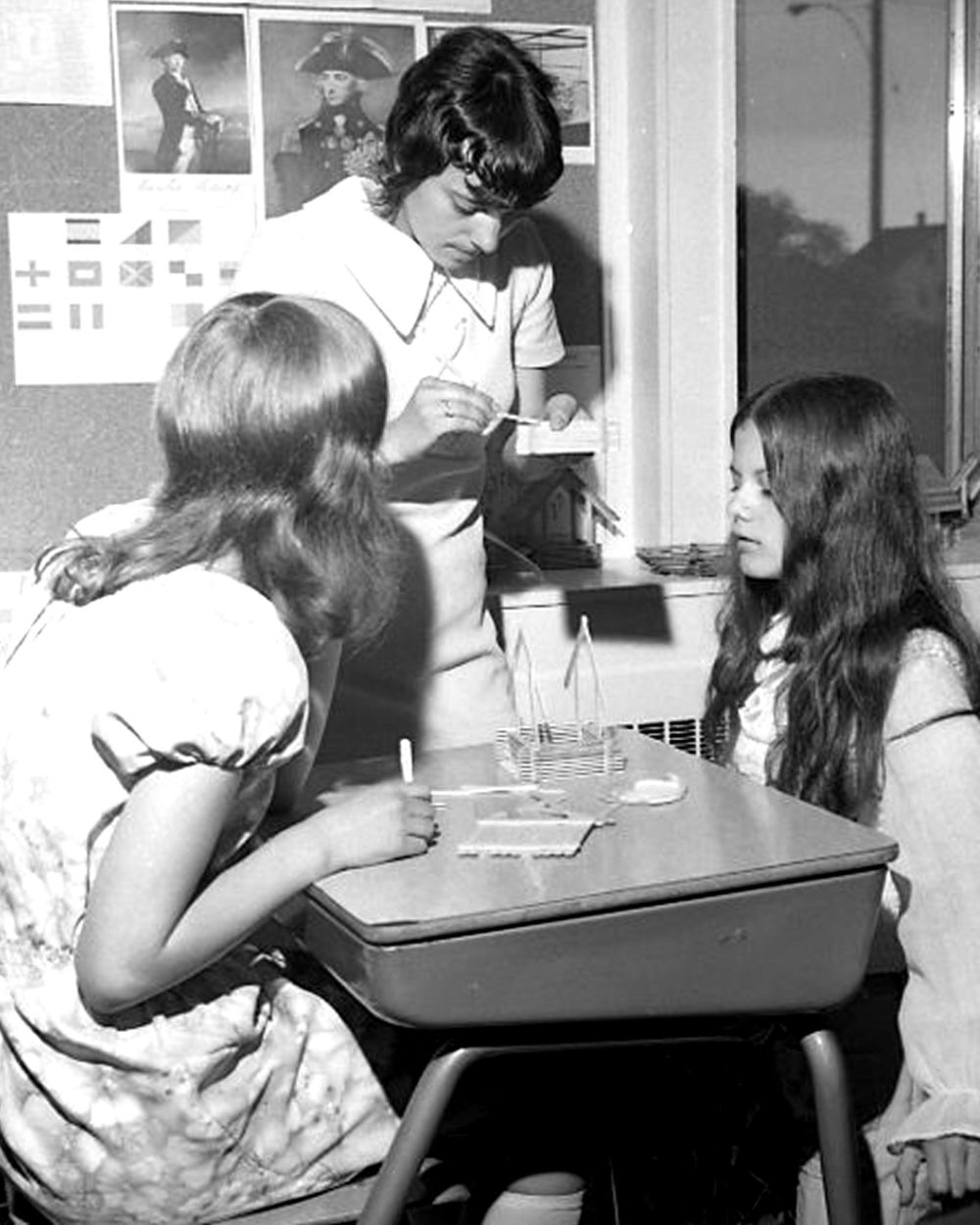COLUMN: Carillon Flashback, June 6, 1972 – Teacher’s aides make life easier for teachers
Advertisement
Hey there, time traveller!
This article was published 05/12/2023 (593 days ago), so information in it may no longer be current.
Since last September, Morris-Macdonald School Division has had on its payroll almost a dozen staff members, never before used by school boards in southern Manitoba.
Teacher’s aides, para-professional educators, call them what you will, these staff members are the first non-teachers working closely within the educational system, and there may be many more in the future.
The duties of a teacher’s aide are countless and involve most anything except teaching; which is supposed to be left to the professionals alone.

The idea of using teacher’s aides to relieve teachers of the many non-teaching duties that have always been part and parcel of every school seems so practical, it’s surprising school boards haven’t implemented the practice years ago.
Morris-Macdonald Superintendent Wilbert Loewen is enthusiastic about the experiment with teacher’s aides in his division, which now employs more teacher’s aides than any other in southeastern Manitoba.
“This practice was also viewed as an alternative to hiring teachers over-grant in our division, letting our teachers teach, leaving other duties to the para-professionals.”
Mary Friesen of Rosenort typifies several of the young women in the area who decided to try their hand at being a para-professional educator. She began her duties last September at the collegiate, after deciding clerking at the Co-op wasn’t for her.
“I had just graduated from Rosenort Collegiate last year and knew all the kids – I thought I might enjoy this work,” she explained, adding the great variety of her job is perhaps more interesting than teaching itself would be.
Secretarial work, typing, duplicating, looking after incoming and outgoing mail take up about half of Mary’s time, while much of the remainder is spent in the classroom.
Friesen corrects routine tests, conducts drills, supervises study periods and the library, and administers the bulk of the sports program.
Any non-academic activities, such as the literary club, art classes and school ticket drives also see the teacher’s aide involved at nearly all levels.
Dale Wheatland at Sanford’s elementary school is involved even more closely with the students in her school, since they are in Grades 1 to 6, and accept her presence in the classroom as readily as that of any teacher.
A recent graduate of Sanford Collegiate, Dale hopes to become a social worker eventually after graduating from Red River Community College.
“I like kids,” she said simply, “and the work’s interesting.”
Thursday morning last week found her involved in a typical task, helping several Grade 3 boys with an exercise involving filling in missing words to complete sentences.
Like her colleague at Rosenort, Dale spends about 50 percent of her time at clerical and secretarial duties. But the remainder will be spent on anything from conducting spelling tests and noon hour playground supervision to test corrections and helping youngsters with getting dressed for outdoors during cold weather.
Jack Forsythe, Sanford’s youthful principal, was also quite emphatic about the usefulness of teacher’s aides.
“Ninety percent of our teachers see this as a good thing, but in the beginning, a few had their misgivings.”
